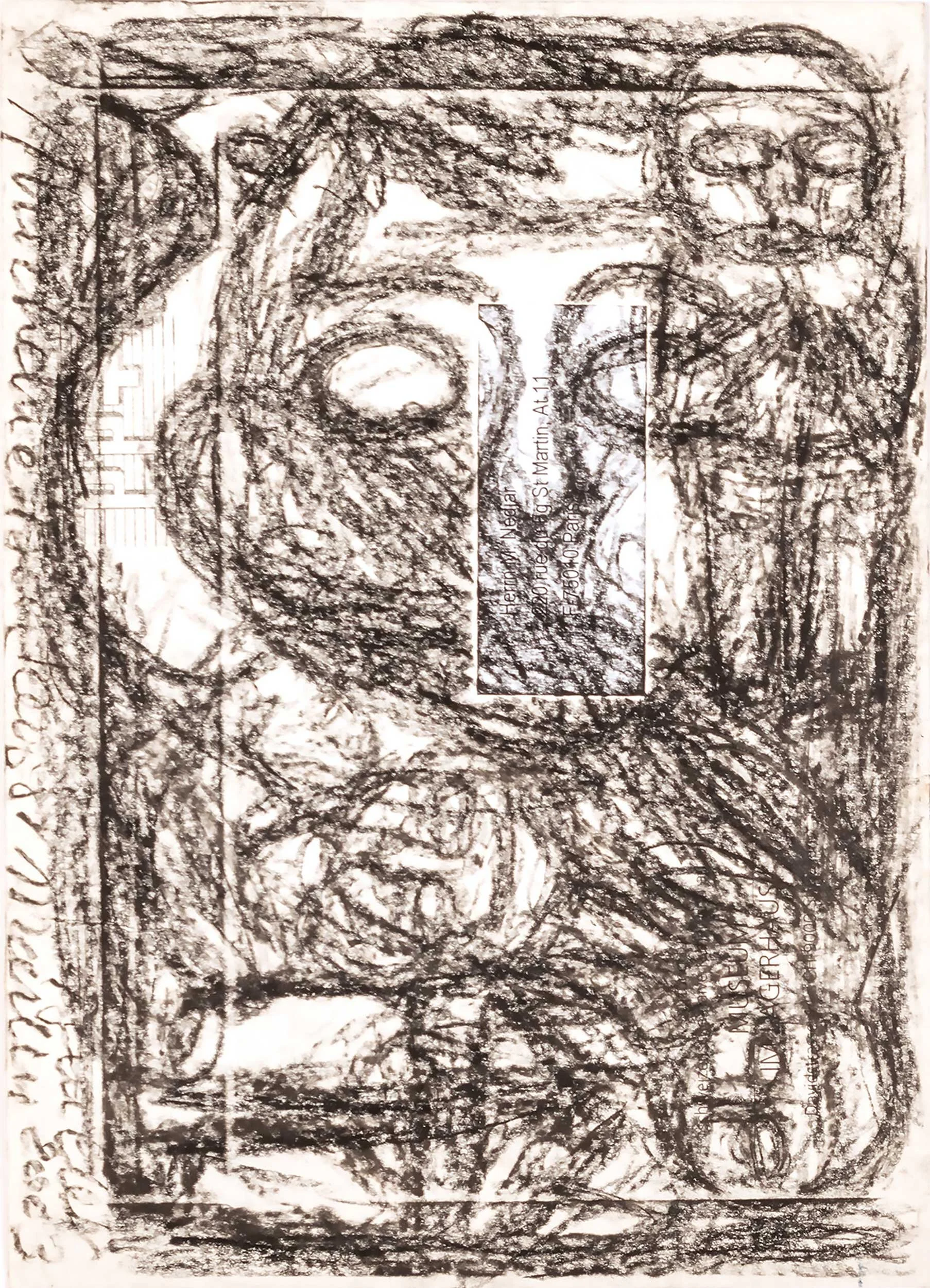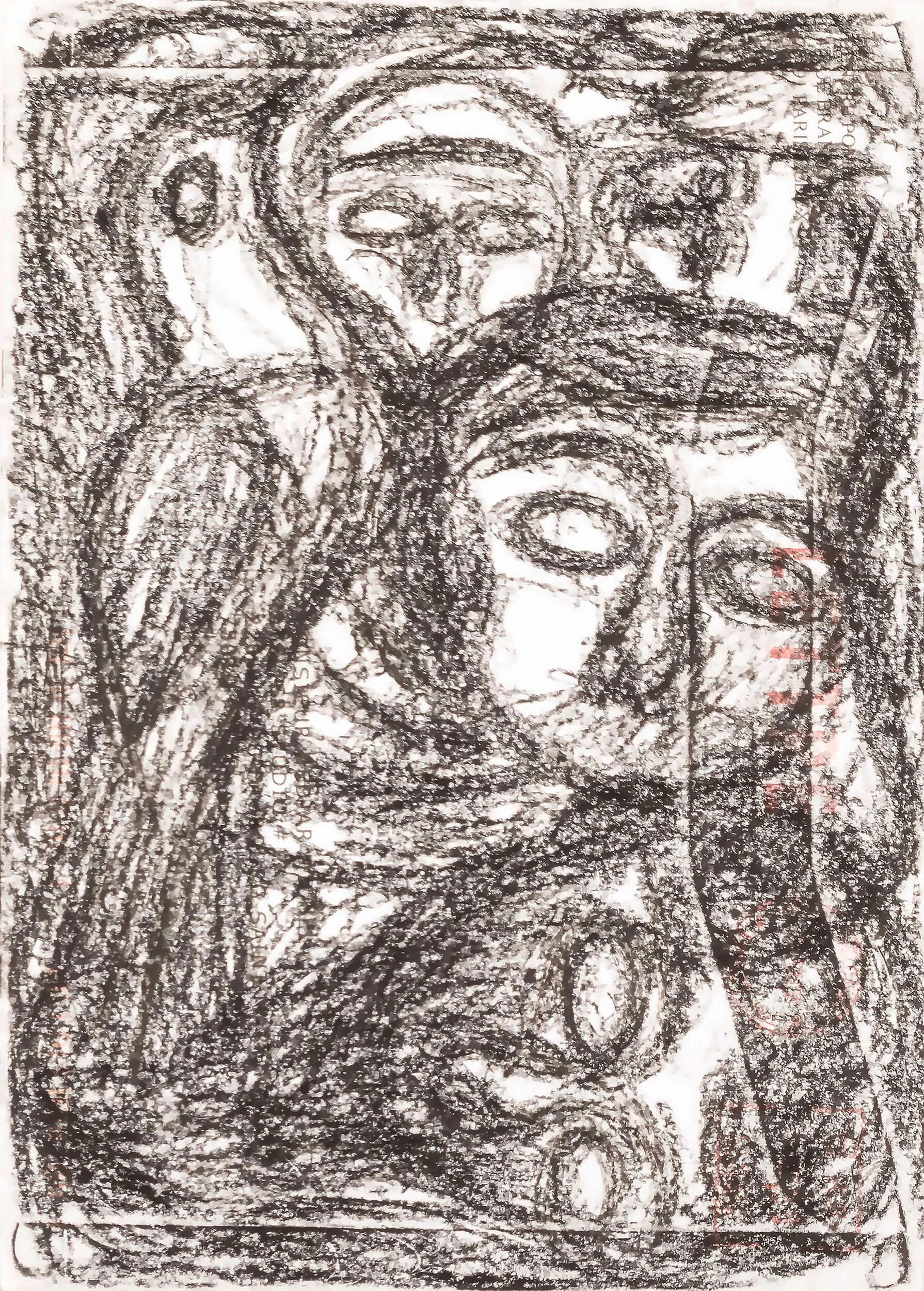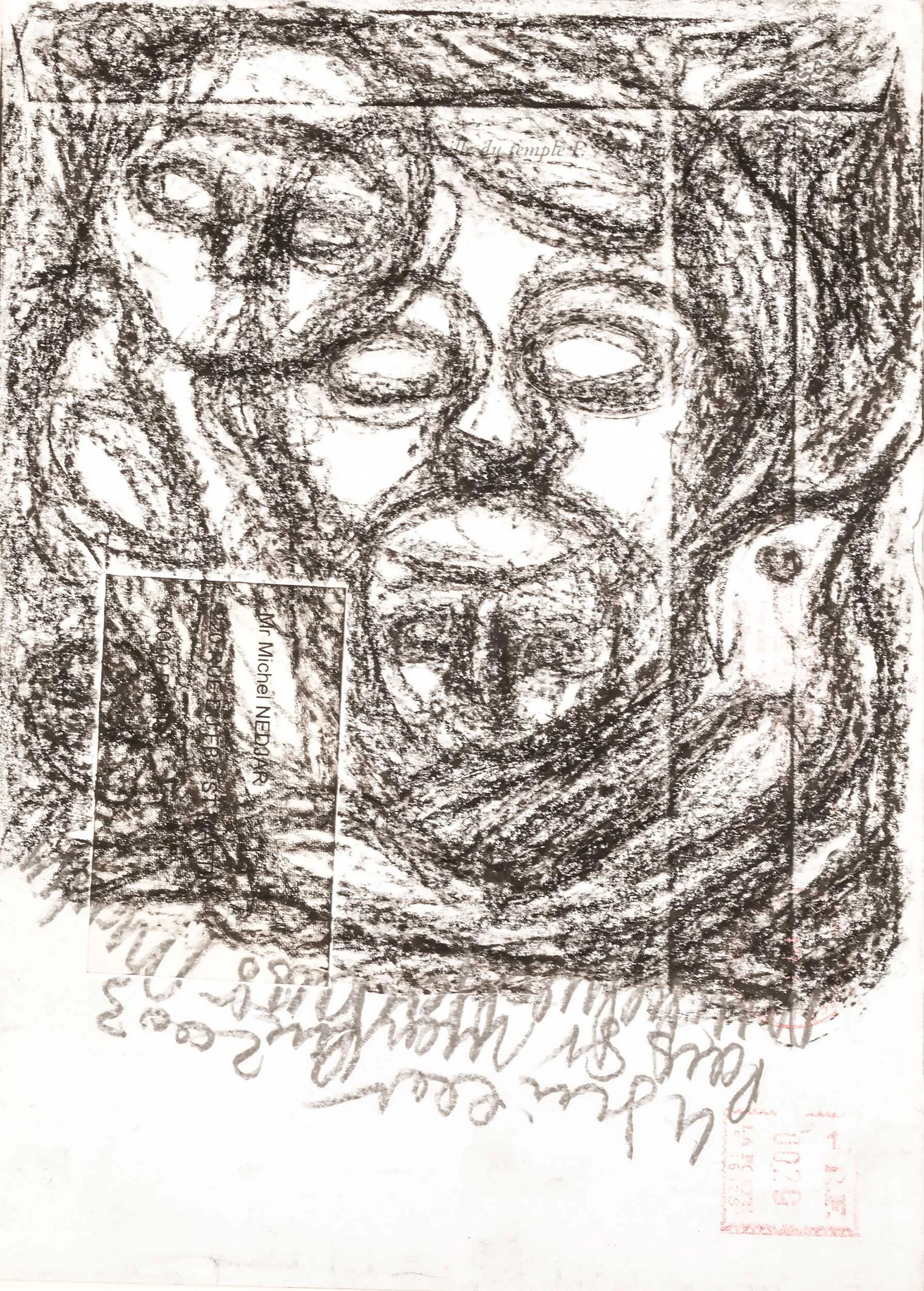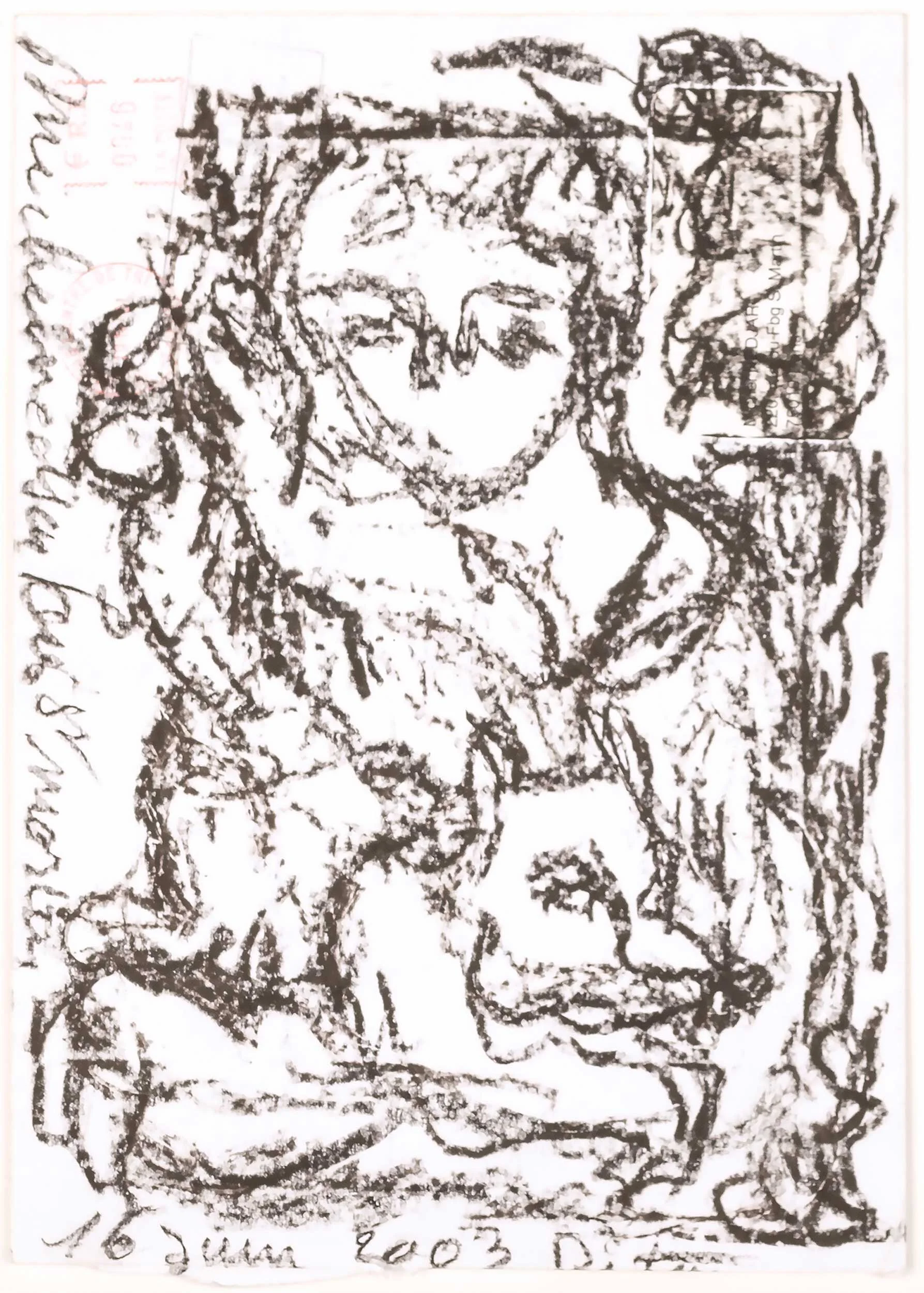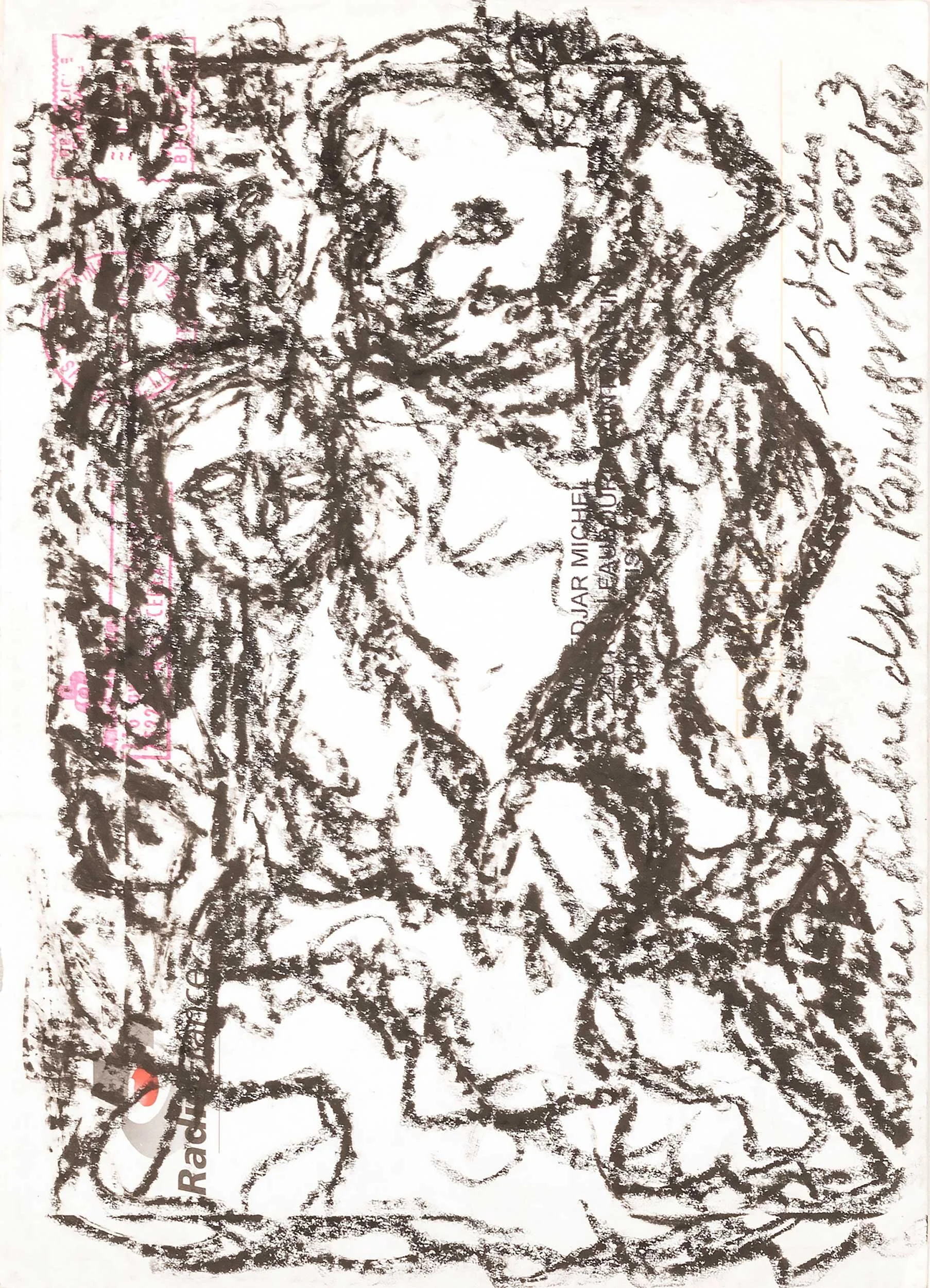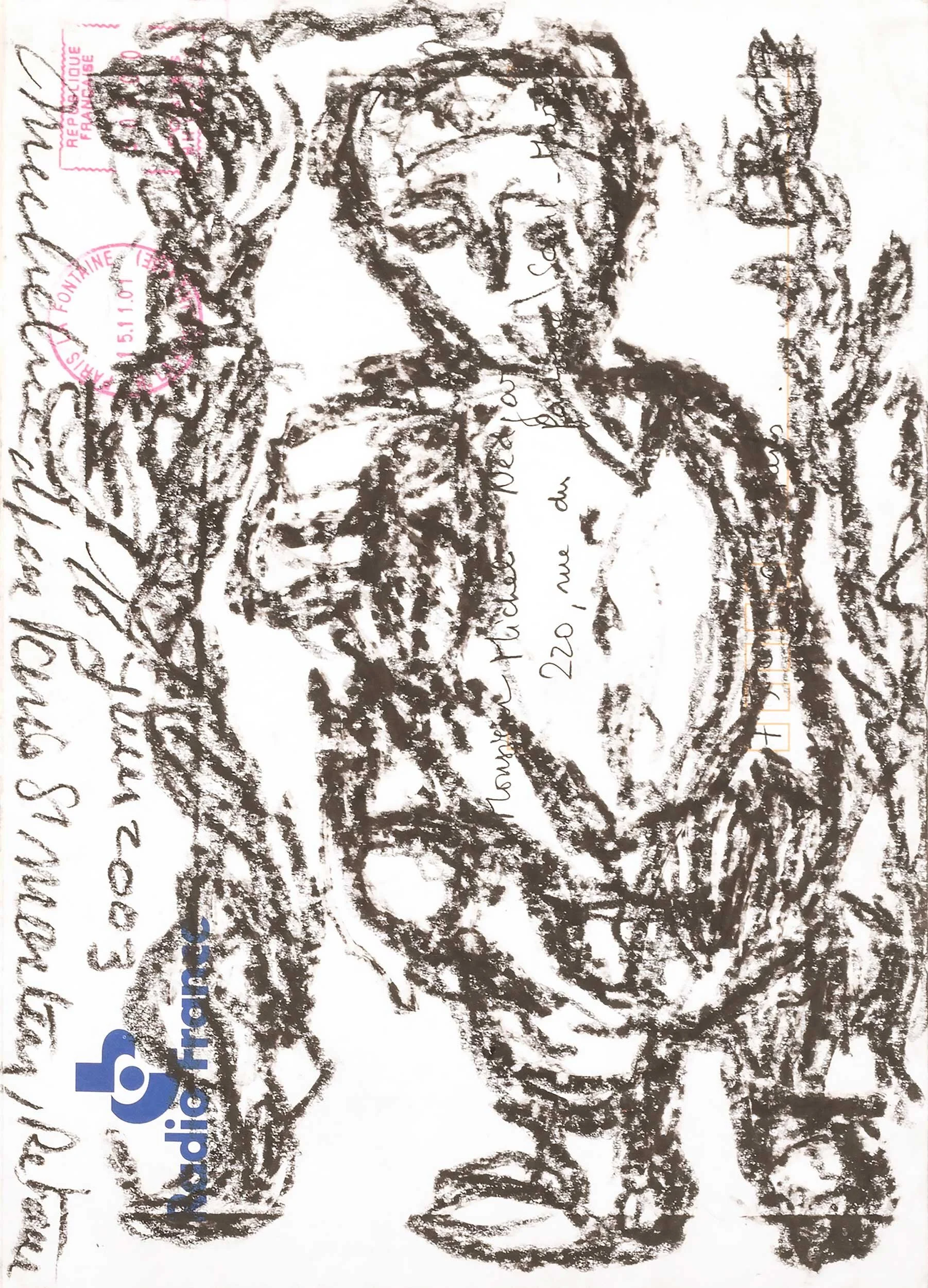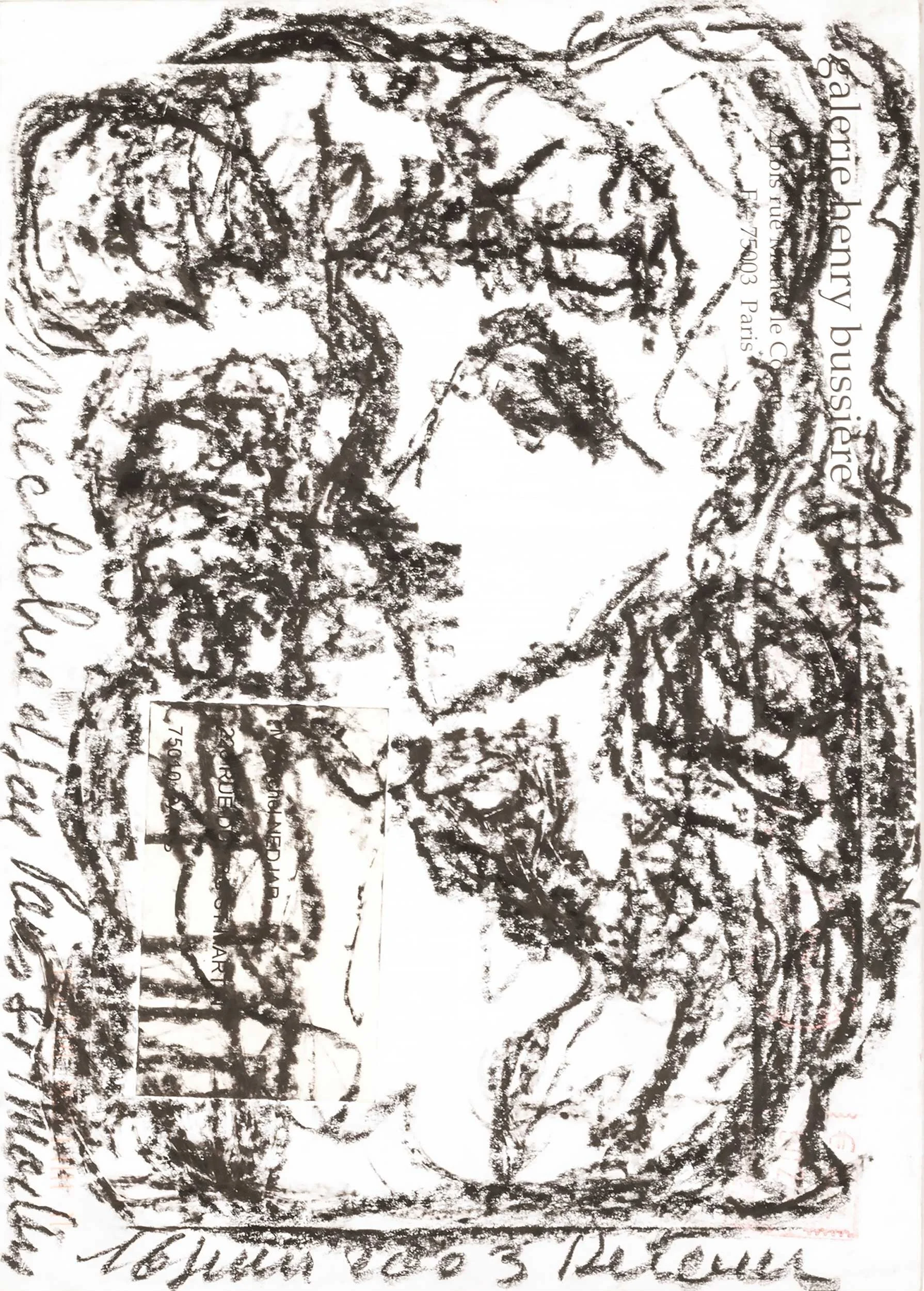Michel Nedjar
Michel Nedjar was born in 1947 in the aftermath of the Holocaust to a family of Jews who immigrated to France from Algeria and Eastern Europe. Many close relatives were murdered and he was only vaguely aware of this until a 1960 viewing of Alain Resnais’s film Night and Fog when suddenly, the horror of the extermination camps became disturbingly real through the visual image. Nedjar recalled: “Everything collapsed within me.... I now knew that the other could kill me. I identified with the corpses. I felt the violence.” It was this that inspired both his drawing and doll making.
He is best known for his early series of poupées (c. 1976-1998) – biomorphic sculptures that often evoke grotesque hybrid beings that might emerge from personal or collective nightmares. The dolls are constructed primarily out of pieces of old cloth that are sewn, tied, and bundled around masses of straw, raffia, and sticks. Many were bathed in a mixture of water and dye, mud or blood, then hung up to shrivel and dry–all contributing to their organic presence as well as evoking a latent horror.
Nedjar’s drawings can be unsettling as well. Mysterious, incompletely articulated faces and figures emerge from dense grounds. The drawings have a thick materiality. Accreted layers of graphite, ink, paint, and wax, usually applied directly by hand, are melted by the passage of a hot, pressing iron, which partially uncovers—or, as Nedjar has said, “unburies,”—what was previously painted.
His work is included in the collections of many museums, including the Musée d’art et d’histoire du Judaïsme in Paris, the Collection de l’Art Brut in Lausanne and the Centre Pompidou in Paris.
EXHIBITION HIGHLIGHTS
2018 Paréidolie, international drawing art fair J1, Marseille
2018 Leben in art brut, bildraum bodensee, seestraße, Hannah Rieger's collection
2017 Michel Nedjar: Crossroads, Christian Berst Art Brut, Paris
2017 Michel Nedjar: Instrospective, Lille Metropolitan Museum of Modern, Contemporary and Outsider Art, France
2016 Michel Nedjar: Présences, Museum of Art and History of Judaism, Paris
2014 Le Mur, oeuvres de la collection Antoine de Galbert, La Maison Rouge, Paris
